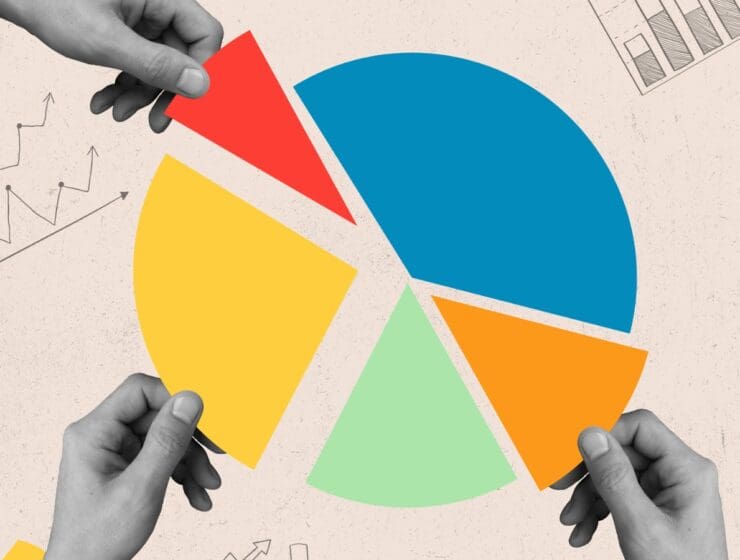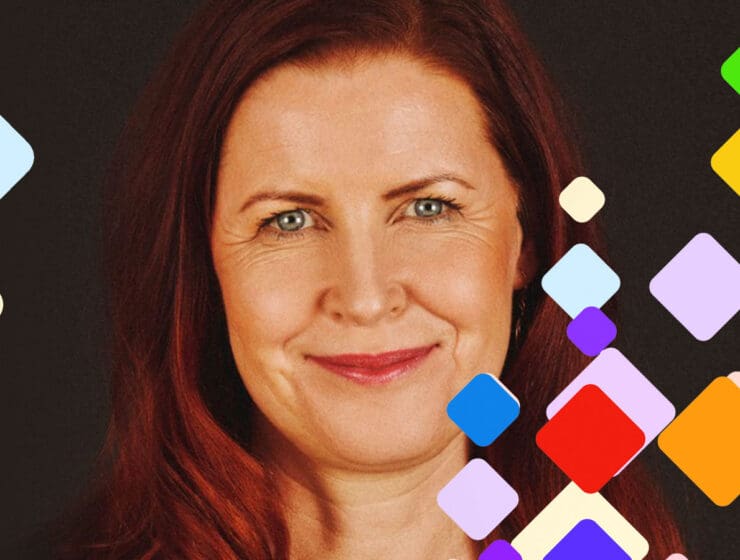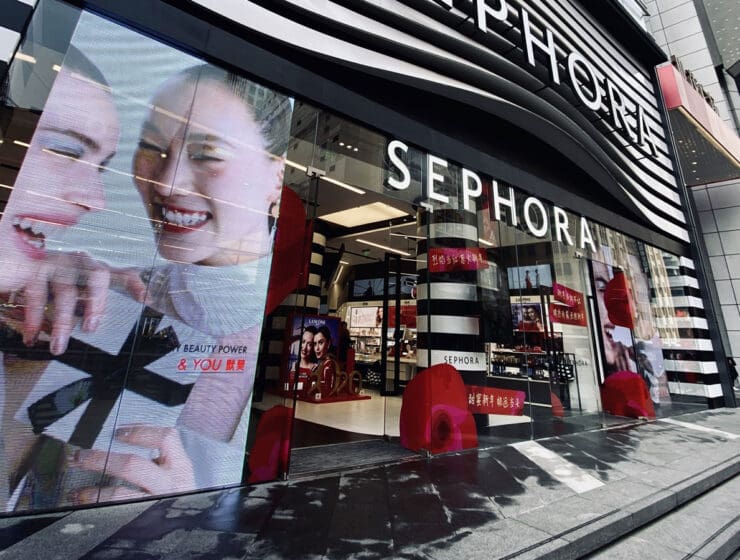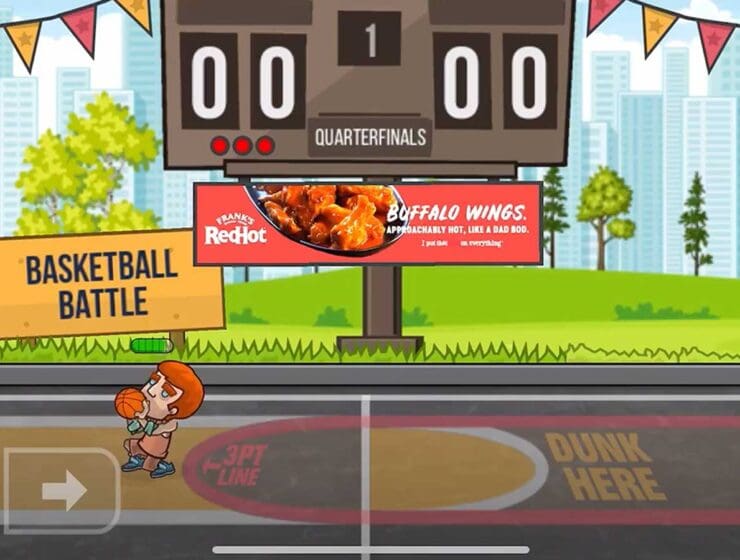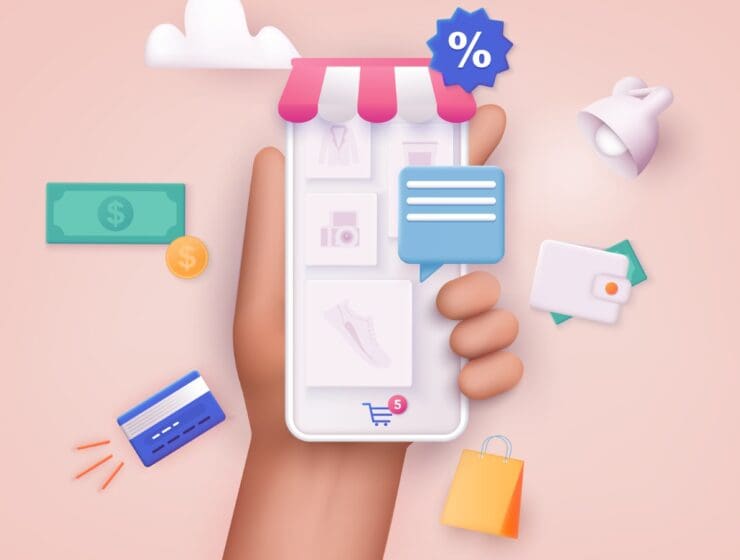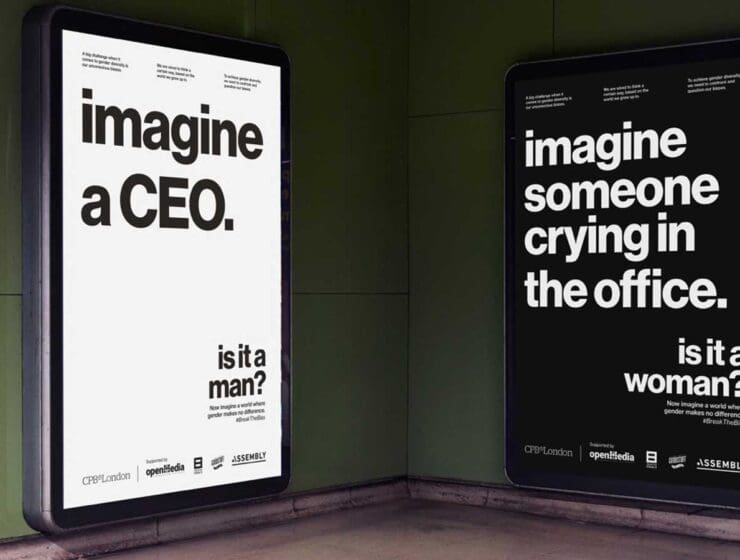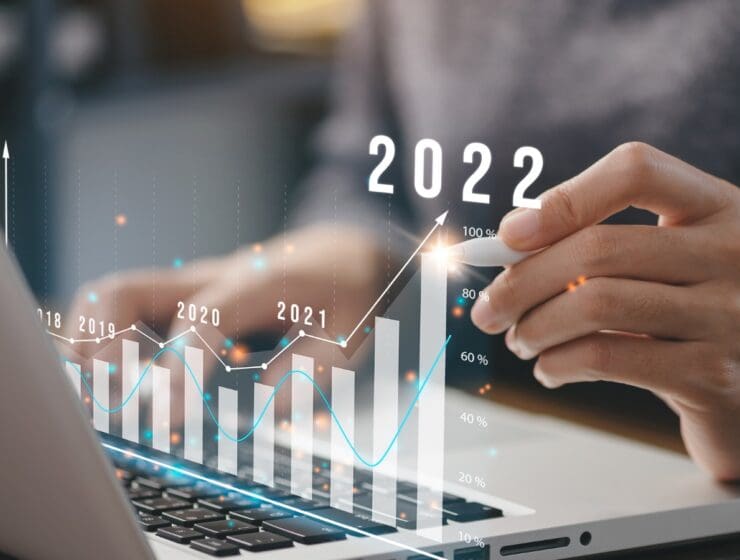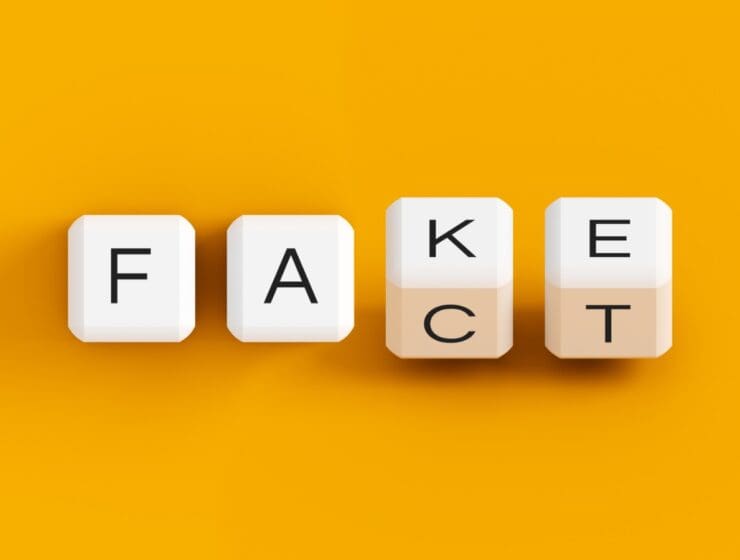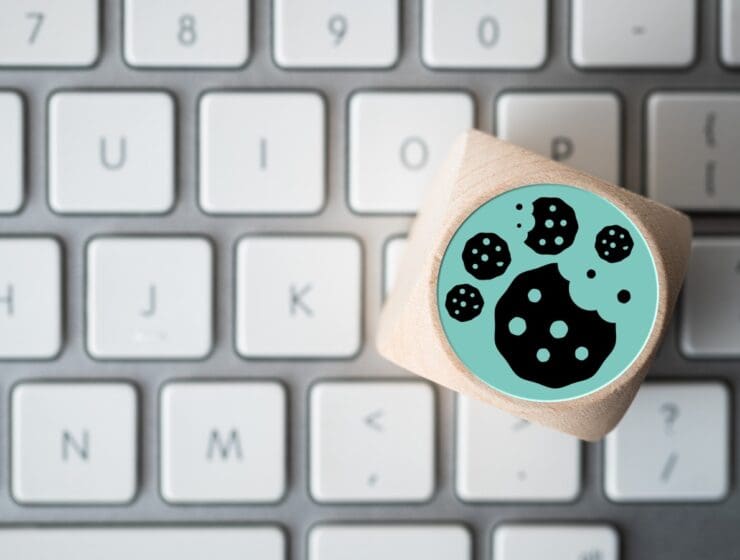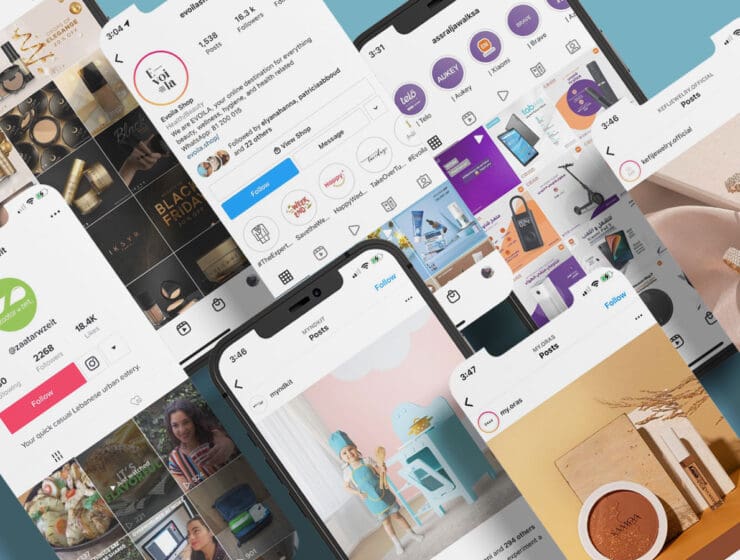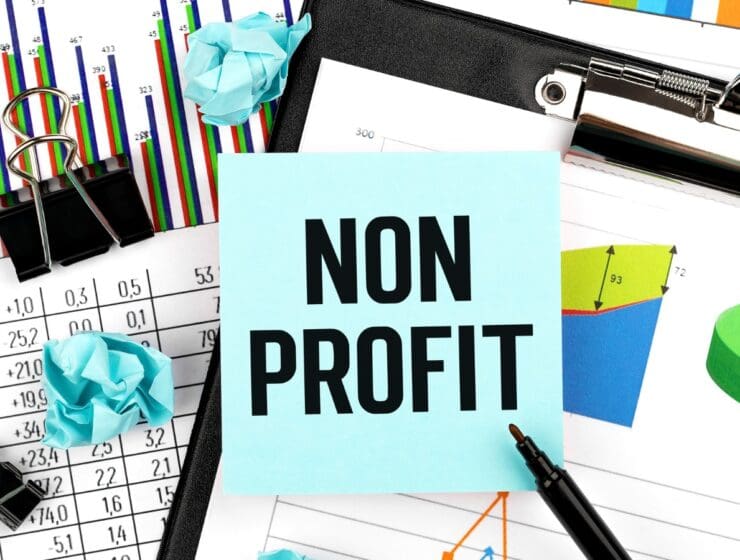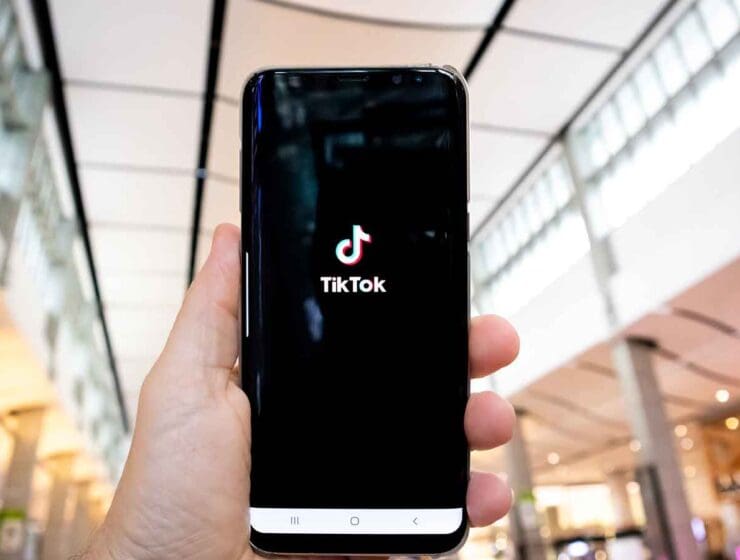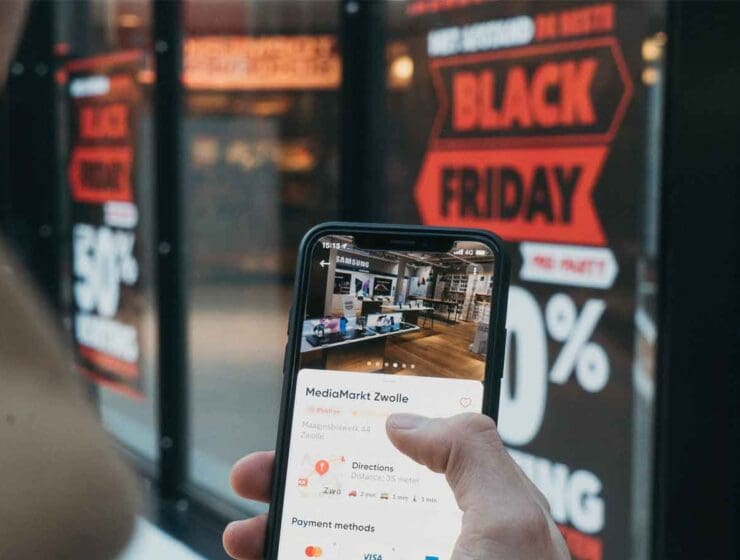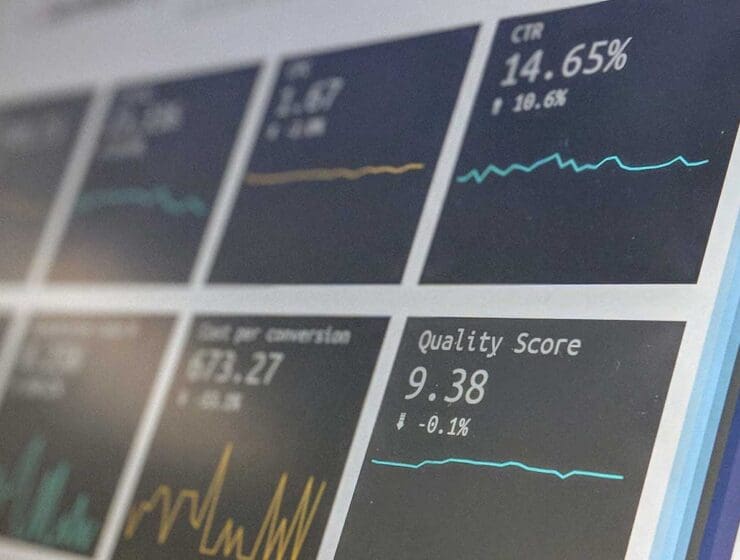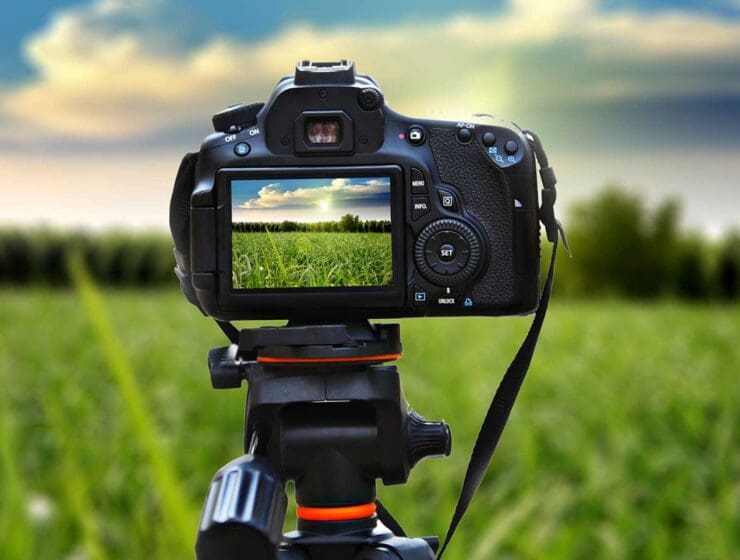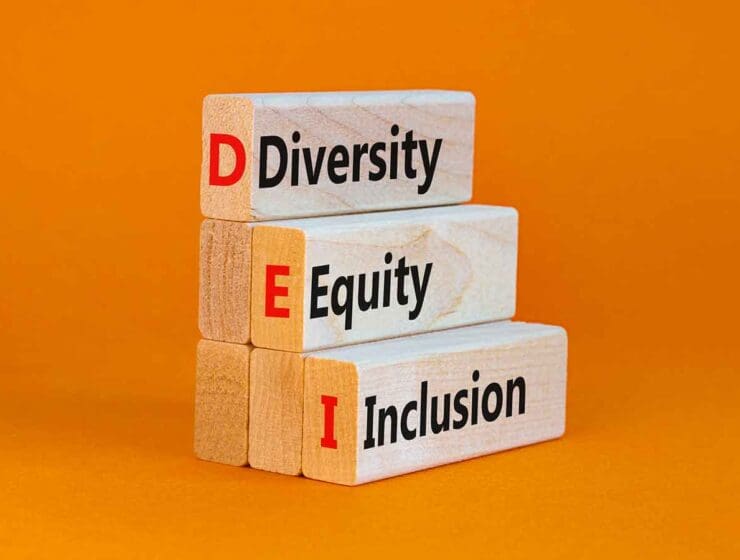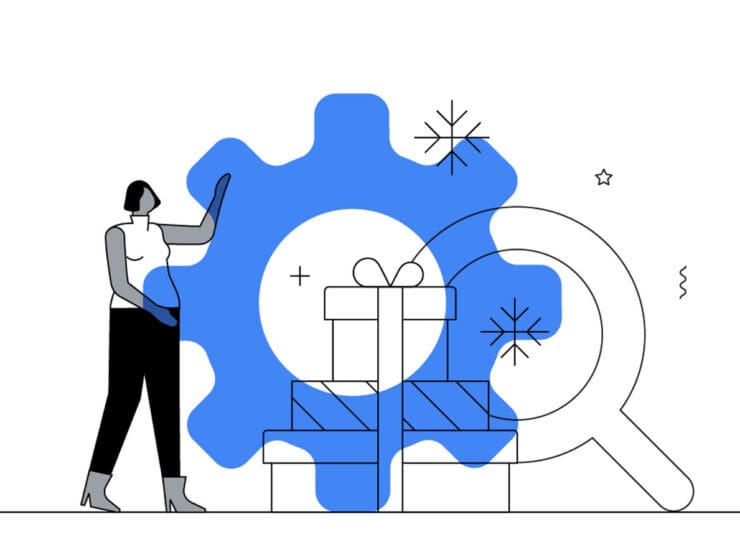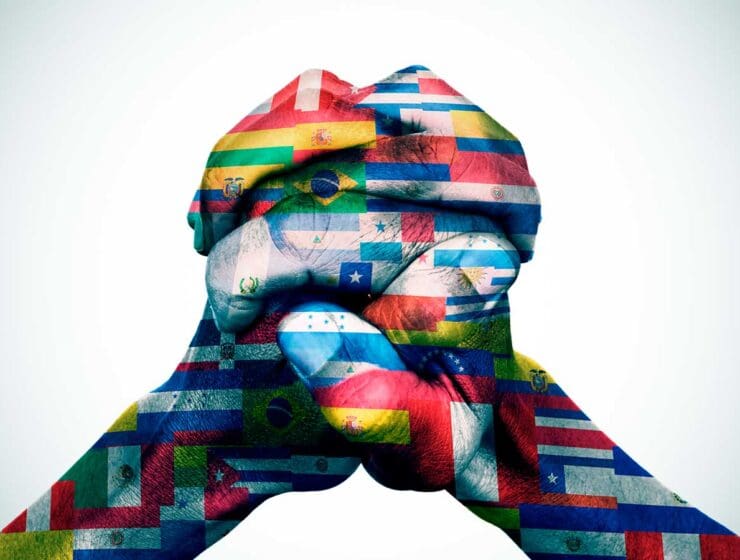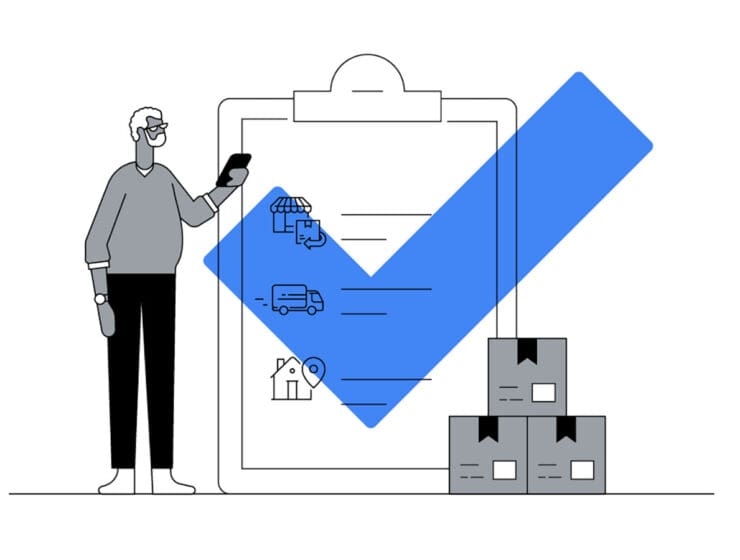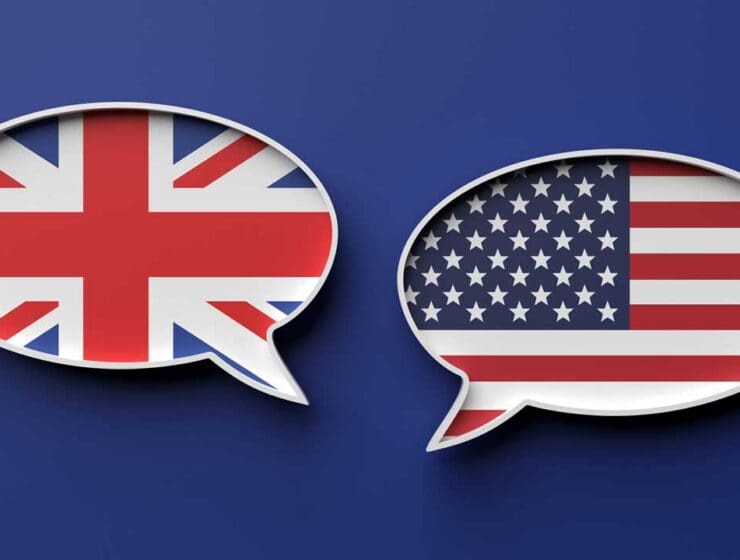We’re at a pivotal crossroads in the data-driven marketing world, and first-party data owners have a unique advantage when turning the corner.
_Editorial
Meet John Denny, VP of Ecommerce and Digital Marketing at CAVU Ventures. Watch as he talks about the opportunities and challenges in the CPG and Grocery space, and how Amazon Ads can help grow your business.
Choosing your genres, using the right technology, and working with trusted partners can open exciting doors into a world where an audience is engaged, receptive and open.
Consumers want to buy from trustworthy brands that share their values. Marketers want transparency into the effectiveness of their marketing.
Conversation is a superpower. But what if we can make it even better?
A Q&A with Tom Donoghue, VP of CTV at GroundTruth and Mike Brooks, SVP of Revenue at WeatherBug
Brands are waking up to the power of podcasting to reach new customers and create more leads. The sheer quantity of frequent listeners is a major factor.
If all stakeholders can elevate the marketing process automation conversation, there is no limits to what we can accomplish.
The more seeds of knowledge that get planted, combined with learning experiences that are created to fertilize the workforce, the more this allows organizations to celebrate successful harvests in the most meaningful ways for all, season after season, and then some.
By Rick Faigin, EVP, Acceleration Community of Companies (ACC) Client Advisory Live music events are…
There’s a new way to look at influencer marketing that we see in the data, and it starts with recognizing the difference between ‘influentials’ and ‘influencers.
For brands, emotions present an important opportunity to engage the audience, and creating an emotional connection is vital to attracting both customers and employees.
At a time of unprecedented disruption, publishers face many challenges; but they also hold the trump card of storytelling par excellence.
We sat down with Adform’s Charlotte Kure Juul to discuss her own journey to the C-suite.
The two speeds at which modern culture is conceived and consumed is not only increasingly key to success, but also resetting the very foundations on which modern brands (and the teams behind them) are built.
Created by the brand strategy experts at Twitter Next, #RealTalk provides a new, data-informed look at what it takes to achieve brand distinction on Twitter (and beyond)
Wilderness, the global social agency, was tasked with helping Metro Goldwyn Mayer (MGM) attract a European wide audience to rent the new Bond movie to watch at home, rather than going to the cinema.
The newest iteration of digital realms, the long-awaited Metaverse, promises to usher in a new era for loyalty marketing.
If a brand must question whether they should have a mascot, they may already know the answer.
Cookies have become an easily abused technology, but how did we come to rely on them in the first place, and what does their demise mean for the future?
The Role of Digitalisation and the Age of Hyper-Personalisation in Attracting Brick-and-Mortar Consumers By Alia…
Retail is rewiring, and it’s happening before our eyes, says Liz Aviles, Vice President of Strategy and Cultural Insights for creative agency Upshot.
There’s only one true way to maximize the return on investment (ROI) of your campaigns. It involves precisely measuring campaign results.
No single medium is more important for today’s brands and advertisers than streaming video.
We don’t need to allow curse-like fears to hinder the dreamers of our industry. Marketers are all creative people, so let’s act like we truly care about creativity.
Brand safety in practice feels anything but personal — an endless problem with layers upon layers of confusion, oversimplifications, and reactive responses.
Using an inclusive lens for your digital marketing approach isn’t just a way to meet compliance needs, reach more consumers, or improve the bottom line.
As the play-to-earn market continues to thrive, the inventory opportunities for marketers will continue to grow; those most ready to seize them could reap huge rewards.
Why brands need to start bringing people back into the shopping process
Studying the emotional relationships customers have with both your brand and your competitive set is the first step to pulling together your next marketing playbook.
As the debate continues over the creation of in-house media agencies, the decision to in-house media data should be a no-brainer for global brands.
As uncertainty becomes increasingly certain, and change is inevitable, marketers must assess and adapt to achieve the best business performance.
The next phase of innovation for contextual targeting will see creatives and attention-based measurement create the “The Mindset Matrix”.
Cracker Jack is adding a new face to its roster — Cracker Jill — to celebrate women athletes that break barriers across sports.
Change is happening. A broad spectrum of brands are working diligently to meet the demands of a rapidly-evolving market by connecting with diverse communities of customers and fans.
With a significant number of people using mobile devices and tablets, we’re starting to witness an acceleration in innovations and increased popularity of online streaming.
Jeff Graham, President/CMO of Cactus, Denver Talks About the Changing Dynamics That for the First Time in Years Are Working for Both Creative Talent and Agencies
When a TV buyer can capture ad exposure over multiple weeks or months, marketers will get a more detailed and reliable understanding of frequency, timeliness and what actually drove an outcome.
Now that people have spent a couple of years doing more online shopping and business online, consumers have higher expectations that digital experiences work well.
So now that we’ve level-set in terms of the changes that are underway and what they mean for both consumers and brands alike, what steps can brands actually take to prepare?
A global pandemic – the Great Accelerator – has kicked off a period of exponential change that’s only just begun. Now is the time to be bold, step forward and fight to be a part of the world that is still being re-built.
This week, Gabriela Carlos, Media Measurement Director at Croud, is on-hand to discuss how measurement works in a cookie-less world, business intelligence, and more!
The rise of digital advertising has not only led to an overinflation of served ads, but also created the race for the most coveted metric of all: Attention.
Now’s the time for brands to lead by example, making websites greener and cleaner, not only to attract more customers, but to be part of the change.
Digital has changed the publishing industry but there is still an important place for print.
Brands should start to anticipate all the unexpected moments that their brand could either support or hinder their ability to connect with their audiences on shared values and goals, and ultimately deliver all their desired outcomes.
By Martin Johnston, Founder and Managing Director at Earth Strategies The natural world is a…
To reach the best online retail shopper, it’s vital to know who they are, what they prioritize, what they buy, and how they buy.
Despite the challenges that keep marketers up at night, Claritas can help solve them.
Embrace Black talent all year-round and I can promise you this: Your campaigns will be the better for it.
By the time they reach your doorstep, a buyer’s journey is mostly over. At this point it helps to understand that journey at a company level, especially within your own website.
Broccoli lovers, rejoice! ChapStick, America’s favorite lip balm, has just released a new broccoli flavor.
If TV providers want to maintain the value of their content, they must fight for the right measurement that does an adequate job of tracking how many people see the ads on their content and how those ads impact their audiences.
Recently, consumer data collection by brands and advertisers has risen exponentially to deliver personalized experiences also personalized advertising. While beneficial to advertisers, this has been crucial to publishers by providing a revenue stream as a way of subsidizing non-paying visitors.
By Ashley Dudarenok A new brand world of engagement is coming with the next technology…
Let’s reassert our place in the strategic and creative high ground along with our newfound dedication to DEI that gets the new generations excited about our industry.
Making an IRL Lily swap, as it turns out, isn’t as easy as AT&T makes it to swap out smartphones.
Utilising high-impact digital advertising opens the door for advertisers to capture the attention of audiences, without interrupting their browsing experience.
A Q&A with Pierce Cook-Anderson, Managing Director for Northern Europe at Smart AdServer
There are many ways to approach a brand’s stance on Ukraine; companies need to make an informed and deliberate decision and to support it.
While it’s tempting to declare that social commerce is the future, the truth is, social commerce is trending now, growing at a rapid rate that requires brands to not just plan for its prevalence but to dive in today.
By focusing on aligning monetization models with the needs and habits of this influential age group, publishers can improve their revenue and strengthen their audience ties.
Rather than narrowing down social strategies to match creative production capacity, then, we need ways of reducing the workload of taking campaigns out in a truly omnichannel way.
SXSW is many things, including a cultural, sensory and experiential overload that admittedly inspires and energizes, but it’s also exhausting in scale and impact.
The metaverse isn’t fully here yet, giving marketers ample time to thoroughly vet their branding strategy testing new approaches, failing spectacularly, and adapting to perfect their technique.
Cultures have blended, and the process inside ad agencies should reflect that. You know it. I know it. But most of you aren’t doing it. You’re just saying that you are.
These are just some examples of the agility and progression alive in events today. The industry is embracing a great reset – and I believe it will be all the better for it.
While historically, CTV has been viewed as supplementary to linear TV buying, we’re moving into a world where it’s central to a TV buying strategy.
Spoilt for choice, online shoppers now have a wide range of options when researching and deciding where to purchase a product.
The most up-to-date businesses are already implementing data practices that will prepare them for future changes and online privacy regulations. So, if you own a business and are not yet taking ownership of data strategy, why wait?
GEICO is having a ball in its latest commercial starring the iconic Gecko mascot.
There is an important opportunity to shift from a traditional marketer to a tech-enabled marketer that can influence more and scale faster.
We are all learning together, but if we can make sure that everyone’s voice is represented in some way, not just those that can afford it, Web3 can reach its ultimate potential.
The world of OTC is awash with oval logos, bland brands, and garish colours. And in a category where everything looks the same, consumers can get tired of looking at it. To create intangible worth, over-the-counter products must disrupt the category and wear their values
Taking a proactive, inventive approach to the Metaverse while keeping societal good at the forefront, will create a win-win-win for brands, consumers, and publishers/platforms alike.
Metaverse marketing techniques can impersonate modern footprints to compose smart technology. However, more consumers need to experience the metaverse and provide valuable feedback.
This episode of The Marketing Insider is dedicated to women in business and features Jamie Blazevich of Buckeye Broadband.
Someone somewhere in your personal or business network is an engineer. Have a chat with them about what they’re working on. Compare notes on how they get stuff done. Ask them what they think the metaverse will be for.
While brands will undoubtably all have to enter this new and exciting playground at some point – with transformed and improved strategies – there is no rush.
Much of what we have seen over the past two years in retail, is going to remain. Consumers are unlikely to simply switch their phones off and dump ecommerce.
To grow a product-oriented business in 2022 requires an investment in product lifecycle marketing, bolstered by real-time insights from the millions of customer conversations occurring online.
The official mascot for the FIFA Under-17 Women’s World Cup 2022 is named Ibha. Ibha is a lioness. Her name translates to “one with good vision or judgment” in the Khasi language typically spoken in northeast India.
Too many adtech companies are trying to maintain the status quo (and the arms race that goes with it) that we’ve all lived with for 15+ years.
With a firm focus on acquisition, expansion and retention, and armed with fresh human-level data, you’re set up for financial marketing success in 2022.
To capitalize on and sustain this growth trend, many ecommerce businesses are adding subscriptions to their offerings. To be successful though, they need to keep several factors in mind.
Here’s what brands, publishers, and technology partners can expect from major TV advertising verticals in the upcoming year.
These are only two examples of how today’s global brands have been met with a timely and difficult marketing decision – with each choosing a path that led them to either cheers or jeers on social media.
By Karl Kangur, CEO, Result Compass Marketing in the world of B2B needs to take into…
An ever-increasing number of mobile users means tapping into what is most convenient for an audience always on the go that expects a more frictionless brand engagement.
Originally, Duo started off as a logo. He didn’t have an expression on his face. When he finally did receive an expression, it wasn’t cute. It was described as… creepy.
The landscape is changing for shoppers. Heading into year three of the pandemic in the U.S., the Omicron wave of cases is falling about as rapidly as it began.
Regardless of the strategy you choose, be ready for change and pivot as the landscape evolves. With the right approach, you can transform your paid advertising channels and build a strong pipeline for the future.
Try meeting your audience where they are online, engaging through LinkedIn, and partnering with industry publications to get started.
There are still some unknowns on the horizon when it comes to how a fully cookieless digital landscape will operate in practice, but that doesn’t mean brands and agencies are directionless.
Harnessing first-party data, and ensuring it’s frequently audited will offer a trustworthy foundation to build on. Marketers who start now will have the benefits of valuable insights into their customers’ needs and preferences.
Successfully managing a small business involves a lot of nuances and efficient practices. When entrepreneurs know where and how to focus their efforts, their companies have a better chance of soaring.
Survey findings prompted CPB London to create a stark poster campaign, ‘Imagine’, to mark International Women’s Day on March 8th.
Having the ability to track both online and offline activity, and work with your partners to establish a truly omnichannel approach that is as flexible as you.
As cookie depreciation bears down on the industry, an influx of cookieless targeting solutions are proliferating the marketplace, with the latest solution to be released being Google’s Topics API.
Brands need to develop community management strategies for campaigns to continue to grow. This will help brands take on the persona and think like fans, leading them to gain a wider audience.
The customer relationship is already valuable to the brand, and a thoughtfully-managed brand can provide immense value to the engaged consumer by way of continuing education, special offers and things like loyalty programs.
For the first time, the beloved Lucky Charms mascot is bringing breakfast lovers, and readers, into his magical world in a new book called “The Magic Inside.”
By Caroline Hugonenc, Global VP Insights & Research, Teads There has been a long understanding…
Dstillery, a leading custom audience solutions company, gives their industry predictions for 2022.
I’d like to thank my Grandma Pearl for inspiring me to dig in and learn what I can about web3 from NFTs to crypto.
The action on the field during the big game between the L.A. Rams and Cincinnati Bengals was matched only by the advertising contests that played out during the commercial breaks.
Talk to any mobile app marketer who has run a launch plan and you’ll hear stories of one-day surges and topping the App Store charts, only to be left with the disappointing reality that such a surge of users is rarely—if ever—sustainable. That appears to be the case for Coinbase, as well.
As programmatic advertisers look to identify and reach their known, and unknown, audiences, they’ll need to continually look at how to use the best data science at their disposal to find the overlaps, unexpected correlations and audience pathways.
How can brands continue to find safe and engaging ways to connect with consumers in this complicated environment?
for the brands who had commercials during the broadcast, spending on average $6.5million for a 30-second slot, they want to know whose ad ‘won’ with 100 million TV watchers.
Like any new technology, synthetic media has received a lot of negative press over the last few years and has been seen as somewhat of a red herring due to some using it to spread disinformation.
NFTs are still in such an early phase that no one brand or marketing team is doing it perfectly just yet, but that’s not stopping the deluge of brands jumping in.
Through strategic technology activation, smart marketers can create ultra-personalized advertising experiences and still respect consumer privacy.
Purpose should be treated in the same way as any other marketing activity. Before you take any action, you have to start with the simple question: what’s the KPI?
Fifteen hours per week. That’s how much time a recent Cint study showed people are gaming, according to data gathered from a cross-section of nationally representative consumers in the U.K., the U.S. and India.
Emerging Social Commerce Channels Requires Innovative Measurement Tools By Jeff Bander, Head of U.S., Eye…
Technology can help us truly understand the context of a digital environment and pair that with dynamic and engaging ad creative in real time. And when you get that right, consumer attention naturally follows.
The Great Reset will be remembered not by its initial calling card of ‘the great resignation’ but by the long-term shift in leaders prioritising learning and sparking the infinite power of the great retention.
Everyone bets on Goliath, it’s the sensible thing to do after all. But think about this. David has technology at his disposal and knows how to use it.
For nearly four hours, audiences were treated to a steady parade of people age 50+ on their screens, leaving no doubt that the network and its advertisers had older consumers firmly within their sights.
The future of television is before us. It will be connected, measured, targeted and engaged in entirely different ways than we have seen in the past half century.
Is your social storefront ready to meet the expectations of a new generation of consumers? With a new era upon us, patience is not a virtue. Now is the time to get involved.
Tackling disinformation, and disrupting the incentives that create it, is a moral, reputational, and commercial consideration. It also feeds into a much broader narrative about responsibility within our online ecosystem.
There is a unique opportunity for marketers to connect with their customers and drive greater engagement this Winter, as sport is a topic that resonates with so many – whether you’re watching, participating, or attending events.
With sharp editorial minds and a library of original content on their side – along with tech to ensure a brand-safe and scalable targeting environment – traditional players still have the opportunity to break ahead in the race for video ad dollars.
From the E*Trade baby emerging out of retirement to a rare appearance from a McDonald’s icon, here’s a look at all the characters that made Super Bowl LVI commercial appearances.
Recent research suggests 76% of customers want brands to do more to control personal data. In a world of instant personalization and constant multichannel interaction, brands need to analyze and react to this data in real-time.
So, if this is the future reality that awaits in the metaverse, and it’s going to be driven by consumers, where does that leave brands?
Why Marketers Should Start Thinking YouTube & CTV When They Think Super Bowl (And Sports in General)
As brands prepare for two of the most significant TV sporting events of the year, they need to adopt a strategy that will allow them to maximize their return on ad spend.
Roku’s scale is unmatched, but the data they offer can pale in comparison to buying directly with publishers, who will share more of their data if you buy with them directly.
One of the key issues holding back the wider adoption of real-time measurement in sports sponsorship is the lack of standardized industry metrics.
Decisions based on insight and understanding of consumers the brand wants to connect with – consistently asking, “Will this execution work for them?” – reduces subjectivity and ultimately builds efficiency into the creative process.
Across the metaverse, spaces and communities are often fiercely sceptical of advertisers. Brands need to adapt to their advertising and communications strategies to operate in meaningful ways in virtual worlds.
The official emblem for the Paris 2024 Olympic and Paralympic Games is made up of three powerful symbols connected to sport, the Games, and France.
In 2022, a larger number of marketers will adopt and refine their influencer marketing strategies as new capabilities allow them to realise their full potential. From social commerce to advanced measurement and distribution, emerging trends are deepening the value of influencer marketing for brands looking to drive quantifiable business outcomes.
If mobile is a big part of your endgame, you’ll need to do a little bit more to push yourself across the goal line and turn that buzz into customers that want to engage with your mobile app.
Many plan to watch the Winter Olympics on live TV, but publishers should note that highlights are more important for these games than their Summer counterparts.
TikTok is the social media platform of the moment. With over 2 billion downloads and 850 million active monthly users, TikTok is home to passionate followers who enjoy trends and content creation.
Choosing your marketing strategy is a challenge, however, especially if you’re deciding between your in-house team or outsourcing. Both have pros and cons, and it comes down to deciding which will help you reach your goals.
For publishers, 2022 may be the last year of easy access to scalable audience data.
How does your technology create meaningful new solutions for that ever-rising bar? The answers to these questions will make or break your retail success in 2022 and beyond.
While it may seem at first glance that the advantages of advanced marketing technology reside out of reach for smaller, less sophisticated advertisers, the fact is that the greatest benefits of modern marketing technology are most readily beneficial to the most modest businesses.
Super Bowl LVI is only a few weeks away, and we’re starting a brand mascot headcount for all the characters that might show up on Game Day. Here’s what we know so far.
Frequent guest of the podcast, Claritas’ own CTO, Al Gadbut, joins us for the first in our newly shortened 20-minute episodes, Identity Resolution: The Multibillion Dollar Industry.
Programmatic DOOH is designed to communicate messages at scale – whether advertising public health messaging, popular products to suit weather conditions or traffic updates.
Now is the time for businesses to go the extra mile to show consumers that they are invested in creating reciprocal value, something that not many audiences are convinced of.
Everyone wants to run optimal advertising campaigns, but when it comes to honing performance, marketers can often question if they are using their content appropriately and efficiently.
The good news? Retail shopping neared pre-pandemic levels this past holiday season, meaning spending is happening across the country, with 89% stating plans to spend at least as much as they did pre-pandemic.
To meet consumers expectations now, brands need to deliver one-to-one experiences across channels that meet customers where they are in their journey. A “Connected Marketing” approach gives brands the capability to do this.
Ultimately, replacing third-party cookies is about the industry working together to help brands connect with people in a responsible and privacy-compliant way.
Let’s get one thing clear: Connected television (CTV) is TV. It is the same experience happening on the same screen in the same room. Seriously – the reach is now there and advertising spend on CTV is on track to reach $13.4 billion by the end of this year.
Taking a dedicated, strategic approach to this key medium can help to develop better ads for candidates and deliver more relevant ads to viewers.
There’s one thing we know for sure about Super Bowl LVI. It’s going to be a Flamin’ Hot Super Bowl.
As the nation continues to diversify, brands must broaden their ideas of a target audience. They must move away from defining their consumers in traditional, broad segments like Gen Z or Gen X, and understand the diverse range of individual needs.
Whether you are a nonprofit, an individual, or a company looking for ways to give back, here are a few best practices as we collectively seek to give back and teach what we know.
Like the tectonic plates that shift beneath our feet, the digital advertising industry is in a state of flux. The landscape as we know it is changing dramatically, driven by a series of dynamic forces that create both opportunities and risks.
Gen Z could fuel growth, but they could also limit it. The actual problem, however, is not with Gen Z, it’s with the hard and fast definitions we use to label them.
BIMI aims to increase recipients’ confidence in the source of emails while enabling senders to reinforce visual branding in communication.
The IP-based architecture of mobile makes the phone the natural “control point” for understanding audiences at scale and solving addressability, and the arrival of 5G only accelerates that reality.
70+ adults’ rapid digital adoption is one of the most profound technological changes this country has ever seen. We’re entering new territory in marketing and advertising, where, for the first time, brands can reach a game-changing demo online and in a big way.
As the industry waves goodbye to the cookie over the next two years, the conversations have to move beyond vilifying one data collection methodology while championing another and focus more holistically on actionability as well.
With mindsets shifting and consumers increasingly speaking the language of #nofilter, brands and their ambassadors might benefit from making some tweaks to their communication style.
Marketers can lay the foundation for a privacy-safe strategy by assessing their current data practices, minimizing data collection, privatizing information, and clearly communicating with customers.
At Advertising Week New York, during the panel “Unicorns of New York City,” Pat Kiernan, award-winning anchor at Spectrum News NY1 led a discussion with business leaders from two of the most innovative businesses, built right there in New York, to tell their stories.
Gamified experiences are most successful when you can tap into a core emotion that motivates intrinsic engagement.
Before you finish your list of New Year’s resolutions, add a couple about brand language. Write in a way that’s simple and inclusive – and rise to the challenges of 2022.
A new pedigree of challenger partnerships is joined by household stars including LeBron James leveraging their own individual sponsorship deals.
TaylorMade and Zambezi, with the help of three of the top ten players in the world: Collin Morikawa, Dustin Johnson, and Rory McIlroy, take viewers on a VFX-guided tour of the last 40 years of TaylorMade innovation.
Both advertisers and publishers are making efforts to harness first-party data and develop new solutions as well as leverage alternative user targeting methods to help restore trust among sceptical digital consumers. While this intent is commendable, the ecosystem has a long way to go to develop a credible solution for the loss of third-party cookies and MAIDs.
The entire industry, including publishers, must continue to take positive steps forward on this journey to privacy, compliance, and respect.
The right Identity Graph plays a critical role in ingesting that data and creating those linkages to determine what consumer behaviors the campaign influenced.
Everyone is fighting for visibility and as one of the most far-reaching and ubiquitous forms of media, advertising is essential for picking up the mantle of lasting change.
The overarching theme of the new endemic era for the year ahead is agility. As we anticipate what to expect in 2022 and beyond, it is clear that the ability to adapt to the ever-evolving demand of consumers will be the key to success.
Each media channel faces individual challenges, in addition to the re-appearance of out-of-home activities. But some principles can be applied across the board to retain or win back customers.
The time has come for publishers to hold themselves accountable and play their part in bringing transparency to the industry. It starts by understanding that ads.txt is a great tool that should be utilized to its fullest extent.
As stringent rules become the new normal, brand marketers should aspire to replicate the framework that regulated industries have perfected.
Ultimately, as AVOD’s value and affordability inspire European households to switch to ad-supported content, brands are presented with a golden opportunity to reach addressable audiences at scale.
Those who participate in a balanced collaborative ecosystem will be able to grow addressability across video and TV environments, create new and high-value first-party audiences, and overcome historic silos between linear, digital video, and CTV to measure and value holistically and at pace with modern viewing habits for the first time.
How usable is your website? That’s a question everyone should be asking of themselves and their web presence on a regular basis. Fortunately, the answer is easier to obtain than ever before, thanks to Google’s Core Web Vitals. Clickio’s CEO, Alexander Azarov explains.
The overarching SEO themes covered here are expected to continue to be important in 2022, and as marketers and SEO’s we will continue to adapt and evolve to provide the highest benefit possible from SEO.
TikTok is building out new creative solutions and ad formats for brands at a lightning pace, including live shopping. With a seamless link added to the video, this could help guide users to purchase products more easily.
5 recommendations as to how marketing and communication teams could adapt their approaches to connect and influence at a ‘mindset’ level, rather than pinning ads or strategies on a generation or an outdated demographic.
CMOs are analyzing an array of datasets to answer questions about their brand – and they want those answers today.
While it’s tempting to look at sales as the final story, customer engagement means playing the long game—investing in LTV, the lifetime purchasing value of a relationship.
The changes taking place in the digital marketing industry cannot be overstated – we are entering an entirely new era of advertising that will demand unique approaches from brands and marketers.
With around 3.9 billion global active users on social media, brands have to be on all platforms to make it big and reach half of the world’s population – what a gold mine to tap into!
Check out the latest eBook by Claritas, the industry’s leading provider of segmentation models for marketers.
Overall, the data supports how younger people are more willing to travel during this time, and as such hotel chains are making sure they reach them in the places they visit the most.
From a branding perspective companies will need to show accountability and prove they are acting on the changes they promised to make in 2021.
We get blindsided by digital, but usually identifying specific groups of people to target is a really powerful way to start testing performance. The key to delivering this is the humble postcode.
With mobile advertisers still grappling with the post-IDFA world, more iOS developments expected and Android changes on the (near) horizon, 2022 will be turbulent too.
Gen Z is going to be the generation of entrepreneurs, freelancers, and creatives. As a brand it is going to be imperative to keep your finger on this conversation, stay informed on the needs and wants of the younger generations, and lend your hand in facilitating the new iteration of education.
Going into 2022, nonprofit marketers have a unique opportunity to tear up their old playbooks and forge new territory for their organizations in terms of channel mixes, data sets and audience insights.
Brand aggregators and accelerators are not really competitors but different approaches to the same goal: sustained growth for brands. And with all the aggregation that has already occurred in the past few years, perhaps acceleration will be the mandate for 2022 and beyond.
Tech-driven experiences provide a cool brand immersion and a low barrier to entry for the use of AI. Impactful, tangible instances of tech used for good, while brands getting involved capture greater share of attention.
People don’t necessarily look at beauty products in the same way they used to, granting new opportunities for brands and doing away with pre-COVID challenges.
Will 2022 slow down and give everyone a chance to recalibrate? Most likely not. Here’s what we can expect.
If a meme highlights a negative brand perception, work to change that perception and turn awareness into advocacy through an integrated communications campaign.
DTC brands are leading the way, showing how to reach audiences with relevant ads, while using data-driven insights to prove performance.
In a period of such comprehensive change, it can be difficult to assess the impact of a single trend. However, one overarching shift can help to explain many of the other changes taking place in retail and commerce: the convergence of media and retail.
Navigating the media world has become increasingly difficult for advertisers as there continues to be an ever-growing number of agency, or agency-related parties and external supplier influences involved in the delivery of campaigns.
Just as the cause of climate change is multifaceted, the ways in which we can design greener digital products is not a singular silver bullet solution either.
By getting in on the ground, advertisers can build strong relationships with publishers and other players while helping to build the foundation that many others will soon discover.
The takeaways are clear: the sooner solutions like LiveRamp’s Authenticated Traffic Solution are implemented, the more time there will be to test and iterate, providing consumers with the value experience they expect.
Campaigns in the omnichannel environment might be better thought of, not as branches on a tree, but as snowflakes: a vast range of unique moments with shared characteristics.
The continued growth of smartphone and smart speaker ownership solidifies digital audio as a growth opportunity advertisers would do well to take seriously.
Now more than ever, it’s imperative for brands to show that they legitimately support causes that are important to consumers, in ways that are not just “lip service.”
Ultimately, consistency and authenticity are what will set brands apart. All experiences should reflect the brand’s values and aesthetics. And interactions should feel the same regardless of the device a customer is using.
Video in DOOH can drive brand awareness and even performance that isn’t possible elsewhere, precisely by virtue of existing someplace meaningful in the physical world. Here are some factors to consider, however, for advertisers that want to get the most out of it.
By replacing third-party data with first-party counterparts, advertisers are presented with tools that are more potent than ever. From CTRs to conversions and even difficult metrics like retention and attention, contextual ads have seen advertising KPIs soar across the board.
Travel brands need to tap into consumers’ emotions and foster a sense of inspiration in order to help them answer the whys—and remember the wonders—of travel.
Today there is an increasing dependency on technology partners for you to understand and reach your own customers. Our approach at Microsoft is to give you full control over your data and allow you to leverage that data to best serve your customer’s needs.
The good work that brands did in focusing on empathetic, unifying messaging in 2020 and 2021 still has a place in 2022.
If you want to generate deeper positive consumer sentiment (and committed action) year-round, make a sustained investment to activate your brand strength around shared values with your consumers. You’ll see it delivers meaningful business value, while impacting the lives of your consumers and communities.
In this environment of high expectations, new technology trends are also changing the customer experience in stores. New hybrid sales fulfillment options like buy-online, pick-up-in-store (BOPIS) and curbside pickup are gaining popularity.
Twenty years have passed since Hagrid and Harry began one of cinema’s greatest adventures. The eight movies since have grossed almost $8 billion in box office revenue alone, confirming Harry Potter as one of the most significant – and successful – franchises of our age.
With a solid content strategy in place, and ongoing optimization, you’ll be able to iterate strategic initiatives throughout the rest of your marketing touchpoints.
Once companies understand the new rules for digital deliveries, they’ll need to shift into higher gear with the tools and the technologies required to engage with more demanding customers.
By Todd Hedberg, The Lacek Group Every parent knows a contest or game can transform…
The emergence of Hispanics into the American mainstream is the biggest business growth opportunity of our time, and the effectiveness of engaging this group in-culture and in-language has never been more important.
The 50+ audience is in the best position to travel, and they’re making plans now for some long-awaited “trips of a lifetime” in 2022. Help them safely get back to doing what they love, and you’ll soon be destined for new levels of growth.
This report brings key trends from AWNewYork to life, examining why they are so important, and discussing the potential impact they will have on our industry, our clients, and our target audiences.
While some organizations have deep data on their individual customers, few have the breadth to compete effectively without collaboration. Leveraging your best data along with another company’s best data has become a competitive necessity, giving you a breadth and depth of insight you may lack.
In the week leading up to Thanksgiving and Black Friday, BrandTotal analyzed paid social media ad campaigns for 28 top retailers, including Walmart, Target, Costco, Macy’s, Best Buy, Home Depot, Nike, Nordstrom, and TJ Maxx — here are the findings.
This shopping season, marketers face a dynamic economic and social environment. Only by having an advertising strategy that is agile, responsive, and omnichannel can they be confident in their campaigns.
There is a tangible reason that your product is able to outperform competition or offer customers an advantage. That’s why its essence is quantifiable, and you should ground in that scientific fact.
The current global supply chain is complicated and only getting messier as the holidays are near. Hopefully, some help will be on the way soon.
Although regulations for influencer marketing are still being defined, the industry would welcome more robust guidelines and is taking steps toward implementing this for the benefit of brands, audiences, and content creators.
The anxiety and fear are normal. But through the fog of uncertainty, there are many reasons to maintain calm and stay the course.
Getting everything from the information on the page, to the CTA right will ensure the work you do up to the point of decision really does pay off.
Data is the most powerful weapon available to brands in the streaming wars. Combining strong measurement with curiosity and creativity will allow these brands to compete in this hyper competitive environment.
Although regulations for influencer marketing are still being defined, the industry would welcome more robust guidelines and is taking steps toward implementing this for the benefit of brands, audiences, and content creators.
Brands are mired in rules, but short of the tools required to automate and enforce privacy at scale.
Black Friday is a crucial day in the retail calendar, and this year, sales are…
By Gökçe Nur Oguz – CEO and Co-Founder of Playable Factory The mobile games industry…
Models built on anonymous, cohorted data give retailers the ability to target based on category or brand purchases while respecting individual’s privacy, assuming the seed file is excluded from the audience. High quality models can create addressable segments that predict purchases with better than 90% accuracy.
Regional buys, targeting streamers specifically, are quickly becoming the next logical step in a comprehensive media campaign.
Consumers expect highly relevant content and brand experiences while also demanding more digital privacy. Enter enriched visual hypertelling, a creative storytelling approach fueled by first-party data.
Content has been hailed as king for what seems like forever. And while the phrase itself has certainly gotten stale, the role of content in any B2B company’s success cannot be stressed enough.
The race for Black Friday spending may be more frenetic than ever this season, but businesses of all sizes have an opportunity to change direction. By identifying what matters most to them, brands lay the groundwork for lasting brand affinity and positive change.
As new solutions emerge to target audiences, both organizations and consumers must play a role in creating a more transparent and secure ecosystem.
Initiatives such as AdGreen’s carbon calculator are enabling the industry to work towards more sustainable practices and to help reach the goal of being zero net by 2030. But there won’t be change unless the entire industry leans in together.
What do businesses need to consider when it comes to formulating and executing purpose-driven initiatives, and how can they ensure they remain authentic? Here are a few key qualities and approaches shared by the organizations that are successfully doing so.
The concept of inclusivity has evolved significantly over the past decade. Inclusivity isn’t just about race, gender, or orientation, or a reaction to discrimination; it’s about different worldviews and backgrounds coming together to tell relevant, authentic stories.
Most would probably know the Star Wars opening theme. However, only the diehard fans would be able to sing Leia’s theme, or even the more widely used, Force Suite.
While the 2021 holidays will be much different than last year’s due to the COVID-19 vaccine, consumers will continue to shop online instead of going into stores.
The data is quite clear that people want brands to align with their values more than ever before, and even companies that have failed to promote sustainability have bounced back when they have made it their main goal.
Let’s just say it: Buying TV ads is challenging. It’s way too hard.
Most are very aware of the common consumer in-store checkout experience – items are totaled, the price is tallied, and the consumer exchanges cash or credit for their goods, which are condensed into a bag for easy carrying and accompanied by a receipt as proof of purchase.
Facebook has become the mainstay advertising venue for fashion brands. If you ask why the digital marketer will say it works the best.
As you begin or continue your journey toward inclusive work, here are three tips to help you along the way.
2020 was the biggest holiday season ever for marketers and retailers—and 2021 is shaping up to be even more competitive. Give yourself a head start by getting your programmatic strategies in place now.
Thanks to digital burnout and continuous partial attention, remote meetings can feel unproductive. Here’s how to get your remote or hybrid team back on track.
The endemic-era’s digital focus makes it easy for brand advertisements to get lost in the sea of commercials, sponsored posts, and constant notifications.
Being human and authentic in brand messaging – whether sharing a promotion, apologising for shipping delays, or delivering a tear-worthy Christmas advert – is paramount as ever.
For any brand looking to grow with Hispanics, the time is now, and soccer, often called “The Beautiful Game,” is a fantastic way to connect with this audience.
Let’s start with the good news: writers aren’t about to lose their jobs to robots. When The New York Times asked an AI system to generate a column on relationships, this was the result.
From a global pandemic to a racial justice revolution, these past 18 months have accelerated cultural change and demanded that advertising keep up in order to stay relevant.
Let’s take a deeper look at FAST platforms, NextGen TV and their impacts on marketing and media industries.
B2B brands are not selling to companies, they’re selling to people. And the reality is that people have come to expect targeted, personalized messaging that’s relevant to their needs in their own lives.
If Covid signals a step-change in how we preview products, however, technology is a must in this marriage of new realities.
Q4 is just around the corner, a quarter so full of opportunity to run creative campaigns and boost sales.
As we approach the Christmas period, we are likely to see our inboxes snowed under by a steep influx of emails that advertise gifts and services. In order to stand out from the crowd, it is crucial to plan your email marketing with close attention to detail.
As summer plans give way to changing weather, it’s time to start preparing for another holiday shopping season. After a pandemic year, retailers are counting on strong consumer spending to drive revenue and provide momentum into the new year.
Dark marketing is a useful tool that allows brands to engage with consumers like never before, and will become substantially more important with the absence of third-party cookies.
Streaming TV has not only become the most popular form of TV entertainment for audiences, but it has also edged out the linear broadcast for the first time this year.
Never before has the importance of context been clearer than over the past couple of years.
B2B audiences are people, not robots. Do not treat them like machines.
Audio enables today’s most powerful influencers and beloved brands to deliver compelling content and build deep, meaningful connections with listeners.
In the following Q&A, we chat with Isha Sesay, OkayMedia CEO and former CNN journalist, to get her thoughts on the rise of female leaders in media, emerging media trends that could make an impact in 2022 and more.
Given the lingering impact of the pandemic on attitudes toward travel, it’s more important than ever that marketers be able to operate with scalpel precision in targeting their ad spend.
A recent Nextdoor survey found that 73% say neighbors are their most important community. This enthusiasm for the neighborhood extends to nearly every aspect of their lives, from how they’re socializing to which businesses they’re supporting.
According to Scott Bower, Co-Founder of brand consultancy Current Forward, brands in the men’s wellness space need to do extensive research with consumers to truly understand their mindsets, motivations and emotions.
The pandemic created a variety of shifts for destination marketers. Drive markets increased, while fly markets went way down, then transitioned into a bumpy recovery.
Brand loyalty is down. “Genuinfluencers” are in. YOLO is here to stay. Confused? Fear not – here’s how to re-engage with younger consumers, on their terms.
The pandemic took a disproportionate toll on women, but we’ve got the stats – and the solutions – to build fresh brand-led conversations that will work.
Patients are now digital-savvy consumers, forcing the medical sector to shift from B2B to B2C – bringing plenty of opportunities for growth in the process.
People know Venus Williams as a tennis champion and Olympian. However, they may not know her as an entrepreneur. As it turns out, Venus is passionate about tennis and design.
In January of 2020, I launched the U.S. office of BAM Strategy, a 25-year-old independent digital agency headquartered in Montreal. It was, without question, one of the most exciting moments of my career and a milestone for which I’d spent the better part of a year prepping and planning.
For too long marketing professionals have been too focused on the wrong metrics, or the metrics they use can be misleading.
TV has converged with digital-like campaign measurement and full funnel outcome-based insights are available across nearly all varieties of TV campaigns.
NFTs. The metaverse. 3 Tips for Marketing in a 3D Business World
For the past decade, global supply chains have been running a seemingly normal path. Even a year and a half later, industries across the board are experiencing the impacts of supply chain disruptions. With massive labor shortages and continual shipping delays, there is increasing desperation to return “back to normal.”
As organizations continue to recover from changes and setbacks brought on by the COVID-19 pandemic, marketing teams will be critical cogs in the engine of innovation to move forward. In order to be successful, the CMO and CTO need to be more aligned than ever before.
The way you choose to visualize your employees at work matters—and can have a real impact on the way they see themselves and others, as well as how supported they feel at work.
The most important step a leader can take to meet employees where their values are is to establish a culture of trust and empowerment. I only have to look at my own career to see how much this impacts employee and company performance.
With so much focus on how to establish and target audiences in a cookie-less advertising landscape, much of the attention has centered on the power of publishers and their communities of engaged and authenticated audiences.
What is your Metaverse strategy? Whether that question induces your eyes to roll or your eyebrows to raise, it’s sure to be one you’ll encounter from your customer, your boss, or your investors soon. That is, if you haven’t already.
As TV becomes more flexible across channels, as new cross-platform metrics take hold and as advertisers get more comfortable balancing budgets across linear and streaming, we’ll see an even greater majority of marketers manage TV holistically.
The consumer journey is as complex as it’s ever been. There are countless factors that come into play that affect the time between a customer deciding to buy something and when they actually make the purchase.
As ‘mobile advertising’ and ‘mobile games advertising’ increasingly become a distinction without a difference, it’s clear that this opportunity is comparable to the early days of social media as a media channel.
Advertising used to follow a predictable, traditional story arc: Lead in, build-up, climax, the big reveal, offer, and branding. This formulaic ad type is past its prime and simply does not perform anymore.
While it looks like a goldmine, marketers do not have CTV completely figured out yet. In fact, some CTV marketing practices still resemble those from five years ago.
It’s never good to put all your eggs in one basket, and harnessing data is opening up fresh ways for brands to reach new people and drive traffic to their websites.
Focus Groups have been set on the back burner, most recently due to COVID-19 restrictions and the necessity for fast and precise results as the tech era is on the rise. So, what’s next?
The global market for Digital Transformation was valued at $589.7M this year, and it is expected to cross the billion-dollar mark by 2025. The pandemic simply sped up an ongoing shift to digital.
While many charities are doing excellent work, one of the persistent obstacles they face is an inability to communicate effectively to the public the scale of the problem and the potential solutions.
To Successfully Implement a Product- led Strategy, Focus on Creating a Friction-free User Experience
Product-led Growth (PLG) is a relatively new model that has been adopted by many of the most successful tech companies. In a product-led approach, brands want their users to get the core value as soon as possible.
What is the key to increase relevance, driving brand love and, ultimately, revenue? Well, the answer isn’t far off from how one got to be class president or homecoming king/queen in high school.
To inspire and help you begin the Route to Ready, here are examples of how three successful brands got started on their own journeys.
As a proponent of ad tech innovation, it pains me to say this. Our industry is wildly inefficient, not automated, and not transparent. And we’re barely addressing these major faults.
After years of ads and interfaces that talk at users, the brands that best empower customers and maximize the benefits of interactive voice experiences will be those that learn to listen.
Of the omni-present Covid-recovery “we’re hiring” pleas, perhaps among the most curious comes from a media company in Brooklyn aggressively seeking . . . more sign painters.
With people ready to celebrate this holiday season, marketers will need to take just such a data-driven approach to create messaging that resonates and is personally relevant to customers.
When it comes to marketing across multicultural audiences such as Black, LatinX, and Asian American Pacific Islanders, it’s imperative to target segments authentically, and that’s what is playing out across the industry today.
With increasing power and cultural cache, today’s biggest influencers are creative powerhouses at the frontlines of a rapidly evolving influence marketing industry.
Ok, so we’re not saving lives, but if I’m selling you a hamburger, you’ll know you’re being sold a hamburger. Terms and Conditions apply.
Amidst an era of incredible change, why has the brand-agency relationship largely stayed the same?
While consumers are out and about in droves and driving around at, or above, pre-pandemic levels, COVID has permanently shifted consumer behaviors, and thus, brands must shift how they are planning and allocating media.
Our multi-part AWNewYork Twitter Chat series with Nielsen continues with part 3 – The Future of Measurement
To demonstrate the outsized impact of data-driven creativity to drive real change, Global Citizen partnered with Google to pose a challenge to world-class creative & performance media agencies.
The celebrations keep swimming upstream for StarKist’s Charlie the Tuna! Join us a new video premiering at #AWNewYork 2021 celebrating the iconic brand mascot.
12 steps executives can take to hold toxicity at bay and put good karma into the universe.
Join Tara Walpert Levy, Google’s VP of Agency and Brand Solutions, as we explore how marketers can be ready for today’s opportunities, and what’s coming next, in streaming and shopping.
Deborah Stafford-Watson, Head of Provocation & Strategy UK at Elmwood, explores the profound shift in messaging at the core of women’s health care products.
Our 4-part AWNewYork Twitter Chat series with Nielsen continues with part 2 – The Importance of Representation in Media.
If you’re marketing to women over 40, take the time to understand what that looks…
Join Kate Stanford, Google’s VP for Ads Marketing, to explore a real story of what it means to be ready. Tune in to hear directly from senior leadership at Mondelēz International on how they pivoted their teams that were traditionally built for mass marketing to deliver “empathy at scale.”
And the winners of the 2021 Madison Avenue Walk of Fame are… Liberty Mutual’s LiMu Emu & Doug and Microsoft’s Clippy!
Today marketers have nearly endless choices, but audience time and attention are tight. People are moving away from many traditional sources, and they’re tired of their screens.
We kick off our 4-part AWNewYork Twitter Chat series with Nielsen discussing The Elements of a Great Brand.
According to Pew Research Center, today in the US, seven-in-ten are using social media. Of that group, younger adults are the most loyal and heavy social media users, creating an unparalleled marketing opportunity.
By Steven Piluso, EVP, Managing Director, Strategy, OMD USA If you work in a media…
By Alison Pepper, Executive Vice President, Government Relations, 4A’s – American Association of Advertising Agencies…
Head of Shutterstock’s Rights and Clearance department, Corky Balch, discusses the legality of using famous faces for your next campaign.
TV ads transacted on broad age and gender targets from panel-based ratings as the common currency will soon be in the rearview mirror. The journey is well under way to evolve the measurement currency to meet the needs of marketers and publishers.
Join us as we explore how the LGBTQ+, Black and Latinx communities are represented by adland, as well as women and non-binary people all over the world.
Behavioural insights will help marketers thrive this holiday season as shoppers stay online.
Most marketers are now considering best practices. While there are sure to be quite a few, they can all be rooted in a clear value exchange — by highlighting how data collection can improve overall experiences for consumers.
As the reality of a soon-to-be cookieless world sets in for publishers, all eyes are on the need to diversify revenue streams and forge deeper connections with readers through insights gleaned from first-party data.
While it’s probably difficult to imagine in today’s world – where anyone can whip up a business-destroying Twitter storm in seconds – listening to customers hasn’t always been the default.
The gaming industry now boasts three billion players globally with a value in excess of $175.8bn. Gamers are an older and more diverse demographic than often assumed.
If you’re a cat or a dog, what a time it is to be alive. A golden age of flavour. A pet food renaissance.
No matter how much the world changes, the importance of serving your customers well will always be a top business priority. Yet how you achieve that goal must continually evolve.
Which colors work best on screen? How many people should you cast? The answers are…
By Michael McLaren, Global CEO, Merkle B2B The days of cold, rational B2B sales and…
For the last few years, companies have been getting serious about designing unique personalities for their brand-driven chat experiences.
With the holiday season fast approaching, travelers are making choices we haven’t seen before. But that’s no cause for despair.
For several years now, the digital ad industry has operated under the auspices that strict privacy regulations could come down at any moment.
Reddit is infamous for being a marketing graveyard. It is full of buried links from entrepreneurs and marketers that just didn’t “get it.” So how do you “get it” and avoid falling into the trap?
The Almond Board of California has partnered with us since 2000 to increase demand, consumption, and positive perceptions of almonds globally. Our tenure began with an innovative nutrition-based marketing platform and has evolved ever since.
The owners of successful brand characters know when to change things subtly and also know when a change can mean big publicity.
If we are to be prepared for this brand-new ad ecosystem, we still need to address the challenges of data disparity and privacy-compliance that are causing so much concern.
The past year has not been kind to digital media. From the (now-delayed cookie-apocalypse) to Facebook’s continual political troubles to increased scrutiny on digital privacy, it’s safe to say digital media has not had a good 2021.
Third-party data, the product, is better than ever. It’s ethically sourced and privacy-compliant and will remain so even after cookies fall away.
By Michelle Scruggs, Performance Media Lead at Google North America The holidays are a critical…
When the Amazon juggernaut rolls into a sector, market dominance is assured – it’s a question of when not if. Its latest venture? The trusty television set.
Brands are experiencing a dramatic increase in the complexity of their marketing mix as a result of digital transformation.
Eco marketing is growing, by necessity, and with increasing urgency. But that doesn’t mean everyone buys into it.
Audio consumption experienced a huge surge over the pandemic and proved its worth as a powerful form of communication and now, at long last, we can measure just how much.
While we have never completely relied on third-party cookies – by offering Commercial Mix Modelling we don’t need them to measure effectiveness – we are indirectly affected.
The modern age heavily features information overload, with constant competing demands for our attention and patronage.
With its exploding population, growing spending power and youthful bent, the U.S. Hispanic population segment represents a lucrative opportunity for savvy marketers.
The ground is already shifting when it comes to cookies. During this transition period, I thought it might be helpful to share a bit about our approach to cookies (or the lack thereof).
The move to a cookieless world isn’t like the dozens of other tech pivots that have kept publishers on their toes in recent years. This isn’t just a bridge to be crossed when publishers come to it. This move is the big one.
The ‘old’ has become new once again for TV and video advertising. As a premium environment, traditional TV has historically given advertisers a much greater reach using contextual targeting; with campaigns based around content.
Customer behaviors and attitudes are always shifting, and the businesses that are best positioned to understand, reach, and market toward those shifts are the ones that will succeed in scaling revenue.
Despite Covid — perhaps BECAUSE of Covid — robust ad campaigns pitch relocation and tourism. CTvisit (Connecticut) is spending nearly triple the typical amount on its fall regional campaign.
From Steve Miller’s “The Joker” to Carl Douglas’ “Kung Fu Fighting”, the hits of 1974 include their share of classic earworms. But over in adland, Chevrolet made a hit of its own that year – “Baseball, hot dogs, apple pie and Chevrolet” which became one of the most iconic car jingles of all time.
Being prepared or not for the seasonality of your industry can see your sales and revenue skyrocket or take a turn for the worse – let’s hope it’s not the latter!
NYC Mayor Bill de Blasio has proclaimed the week starting October 11 as New York Digital Signage Week. While it’s true that out of home was impacted more than other ad mediums over the past 18 months, the sector has rallied back steadily.
Google and Boston Consulting Group conducted a series of surveys to understand changes in consumer shopping behavior ahead of the holiday shopping season. Suchi Sastri breaks down what the findings mean for retailers.
The role of the agency is changing. Many brands are adapting their processes, redistributing their budget to get more control of their output, with a bigger focus on in-house. This shift has been ongoing for years.
The advertising technology industry has spent most of the past 18 months developing plans and products to fill the white space in targeting that will be exposed when Google finally stops supporting third-party cookies in its Chrome browser.
As Google prepares to move forward with testing FLoC – a.k.a. phase two – the digital industry is encouraging brands to use this time for exploring, testing, and evaluating all the alternative tracking solutions.
When working with finite marketing budgets, businesses need to be sure they’re focusing on getting the right message to the right people at the right time. But who are the right people exactly, and what do they need to hear?
As markets threaten to close a window of opportunity on younger generations’ financial security, AML Head of Strategy Christian Barnes calls on investment firms to start showing EQ as well as IQ – before it’s too late.
For marketers, the glamour of digital has often been its ability to drive conversion, generate leads, and simply get people to shop – with immense accountability.
The old holiday planning cycle of kickoff and design in spring, test in summer, and execute in fall isn’t in full swing like it used to be.
As podcast listenership continues to skyrocket, marketers are allocating a greater portion of their media budgets to this increasingly popular medium. Today, advertisers are spending more on podcast advertising than ever before.
In the heat of summer, the holiday shopping season can feel like it’s a long way away. Experienced e-commerce merchants know better.
Direct mail marketing has fallen victim to the supply chain issues gripping countless industries, making it hard to find the very material that mailers are printed on.
Over the past 20 years, automation has transformed digital marketing and media, in all its forms, one way or another. Despite its ability to change the game, however, its impact has been gradual.
Picture this: you’re new in town, and choosing a pub to pass the hours in. One place has half-price drinks and the bar is heaving.
There’s been a tremendous amount of upheaval in the ad industry recently.
If you have not invested in creating a culture of video within your organization in a post-COVID world, you are literally losing ground to your competitors at this very moment.
Stimulating and creating a space – both physically, emotionally and intellectually – where ideas can be formed, new thinking can be encouraged, and product development can be shared and inspired is often easier said than done.
The pandemic has reinforced what brands and retailers should continue to focus on: enabling people to shop when they want, how they want, and where they want, all the while providing a pleasant and frictionless experience.
After spending months indoors and consuming in-home digital media at a colossal scale, the reopening of hospitality and event venues is bringing back eyeballs to public spaces.
It shouldn’t come as a surprise then to see that 60% of marketers are shifting ad spend from linear to streaming TV platforms.
It seems obvious that performance marketing and creative teams should work together but most agencies and brands have created silos within marketing to decentralize their operations between creative, media buying and performance marketing.
As marketers consider their internal and external practices where thoughtful DEI is concerned, I think the advertising industry might be ripe for change within its oldest institutions.
In the following Q&A, we chat with Eddie Dingels, GroundTruth’s Chief Operating Officer, to get his view on the evolving mobile landscape.
With under 16s making up almost 40% of all online users, they are having profound and long-lasting changes on how the internet is perceived and used.
Data partnerships – they’re incredibly powerful. But do you know if your data partner takes security as seriously as you do?
We bring on a new data provider at least every quarter, if not every month. Along the way, we’ve learned some lessons about how to bring on new data partners.
In the last year, the pandemic has forced businesses to rethink everything. Companies have scrambled to figure out how — and even whether — to move forward.
We often tell people to be themselves, shouldn’t the same apply to brands?
The Creator Economy is a wave that has been building. About three years ago, there was a surge of micro-influencers and niche markets that joined social media celebs.
Data independence means that a marketer’s ability to reach their target audience is not solely reliant on the whims of tech giants, but rather their own data collection and management.
With the return of bigger audiences and the end to lockdown in many parts of the world, out-of-home (OOH) advertising revenue is expected to bounce back in 2021 with a growth forecast at 14.9%.
Google’s Core Web Vitals will soon be used to rank a site’s SEO. The rollout is due this summer, so it’s currently high up on many publishers’ agendas.
Visiting in-laws in heartland Ohio showcased an important reminder about media trends: political messaging is 24/7 even in non-election years.
The past year and a half – with its lockdowns, missed holiday opportunities, confusing rules and regulations and inclement weather – has presented multiple barriers to spending.
What if we were more self-aware on a daily basis, and actively worked to find our way back to our younger selves? Less second-guessing, overthinking, and obsessing over the opinions of others?
The digital world is on the brink of big changes, and publishers will see their workflows evolve significantly.
In this Q&A, Scott Knox, President & CEO, Institute of Communication Agencies and Jamie Matthews CEO of independent agency Initials, will be delving into the current challenges North American agencies face, particularly after the pandemic.
Although it might be hard to remember a time when “Googling” wasn’t a ubiquitously used verb, it’s worth reminding ourselves that the company is only 22 years old.
While this has been going on, connected TV (CTV) – which is free from third-party cookies – has seen its viewing figures increase in a massive way, growing by four billion hours per week in early 2020.
If you’re looking to get the finishing touches to your summer and autumn outfits, join us as we walk you through the top trainer trends of 2021.
Old print vehicles aren’t grabbing attention or influencing purchase behavior the way they once did. Most Americans—46% according to Pew Research Center—don’t even look at print circulars anymore.
The retail sales season will soon be upon us, starting with back-to-school sales next month through to retail’s most significant sales event – Black Friday.
If there’s anything certain about today’s world, it’s that it’s uncertain. And in the world of B2B, nowhere is that uncertainty more well-founded than in B2B events.
Between two products of identical quality and cost, today’s consumers will choose the product that stands for something they support ten out of ten times. We promise.
The history of innovation follows a familiar pattern: New technology comes along that improves our quality of life—like the car—then time reveals its unintended consequences, and innovators jump in to create something even better.
It’s difficult for today’s marketers to measure what’s actually causing customers to engage and/or buy. Fortunately, one tool can help marketers accurately calculate conversions across channels. It’s called an identity graph.
Born during a time when consumer technology was exploding, GenZ spends up to 10 hours per day scrolling on their mobile devices and has become a ‘camera native’ generation.
Successful agencies actively strive to develop and maintain long-term client relationships. And it’s easy to see why.
Now physical events are returning and so is the unique spark of interacting with people en-masse.
Let’s take a look at a few ways in which marketers need to reframe their thinking around Hispanic audiences and what was once considered a “niche opportunity.”
Once upon a time, local advertisers had to rely on their own instincts for marketing, whether printing flyers or hiring a sandwich-board-spinner.
The next major advertising channel will require investment, organization and experience.
It’s like the American populace have been bottling up their feelings for decades and finally exploded in a roaring symposium of joy, sadness, fear, excitement, anger and more.
It’s no exaggeration to suggest that Covid-19 has brought out the best in retail brands. This was especially evident on the supermarket frontline, where uncomplaining staff provided reassurance and support as anxious customers descended on food aisles last year.
Retailers have experienced a cataclysmic shift over the past year. What used to be considered standard is no longer relevant as online shopping has progressed at warp speed.
A recent survey found that 6 out of 10 consumers think that brands have a responsibility to be encouraging COVID-19 vaccinations. Major brands, from Budweiser to Krispy Kreme, are stepping up to this challenge by offering incentives unique to their brands.
When making the case for brands selling on Walmart.com, most experts focus on the financial reasons: Walmart has favorable demographics. It has surpassed eBay to become the second-largest marketplace.
For digital media, advertising and numerous other industries, automation is the key solution needed to improve efficacy and efficiency, allowing businesses to outperform the competition.
The reality is that we experienced a major lifestyle change last year and reverting back to our pre-COVID habits will be no small feat.
Did you know that an average U.S. consumer spends more than 70% of their day outside their home?
Considering that Safari is the most popular mobile browser in the US, there is a lot of missed opportunities for monetization. Publishers are now fighting with one hand behind their backs.
Even in the Ad world, Client Servicing departments are part of the old, tried and true Ad Agency adage… but things have been taking a turn.
From the rise of cohorts to advances in contextual solutions, user-level targeting will shift towards a one-to-many approach – and this is where the real change will take place.
To realize its true potential in this time of growth, CTV must glean lessons from the journeys of other digital channels as we head into a privacy-first future.
Recently, France ruled that Google’s advertising practices created unfair advantages by favoring its own ad server and ad exchanges over third parties.
Welcome to your journey towards a cookieless world. Those third-party cookies that marketers love so much — and that consumers are so annoyed by — are fading fast.
In the world of communications, there is a stereotype that corporate comms, with their technicalities and legalities, aren’t creative. So, how do you go about changing perceptions around corporate and sustainability comms?
Brands are constantly battling for the attention of their audience. This is quite a challenge as there is an incredible volume of content bombarding consumers each day, every day.
Like most sectors, frankly, Sport has done an excellent job of papering over the cracks of this issue. Mental health has a stigma tied to weakness, which is absolutely the antithesis of what most sporting professionals want to portray.
Digital marketing trends come and go, but some strategies continue to hold importance even as the world progresses at a fast pace.
The Games, as well as the Paralympics, create a unique opportunity for businesses to connect with their customers around something that resonates across the board: sport.
Moving forward, it will be important to approach TV measurement and addressability in the same way as digital, giving advertisers the cross-platform insights they need to increase the efficiency of their TV ad campaigns.
Before marketers get too optimistic that the old days will soon be here again, it’s looking more like a slow transition back to normal. Enter the hybrid event.
Success in marketing still requires strong creative. All the technology in the world isn’t going to get you far if you can’t deliver compelling, relevant creative at the moment you’re reaching your audience.
With the rise and rise of digital marketing, advertisers have sophisticated tools at their disposal to measure and auto tweak ad effectiveness in real-time.
While brands knew Apple’s privacy forward approach was coming, the world is just now seeing the real impact of this ATT update, which is giving consumers more access and power when it comes to what information is shared with advertisers.
There have never been so many talented developers and titanic publishers working within the genre, and that’s owing to the never-ending appetite for hypercasual games in the world today.
More than ever, as a national and even global community we need what the Olympic Movement provides – an antidote to the cultural tenor of the past two years; a push to exhibit “the best of us.”
Forward thinking marketers focused on performance strategies and methods have noticed an undeniable shift — especially within partnership and affiliate marketing.
A swan gliding serenely on the water’s surface yet paddling frantically against the depths below is a favourite analogy of marketers when describing their day-to-day role.
Euro 2020 was the tournament in which sports consumption went truly social. With public venues in many countries still subject to social distancing or lockdown restrictions, fans took to more accessible digital channels in greater numbers than ever before, and the Tokyo Olympics is sure to continue that trend.
Like most runners, long runs are where I do most of my thinking. It’s a rare gift of white space in our always-on world. It’s time to stop thinking about brand and performance separately.
If you think that branding is a luxury and something you can do in the future, when your business is successful, you’re not alone in thinking this way.
More and more brands are wanting to appear on TikTok, and the platform seems to have achieved a rare level of viral popularity among the most desirable audiences. TikTok, however, is not a typical media platform. Here are some very important points to consider for brands that want to get onto the newest, most popular digital platform.
Pharmaceutical marketing – it’s a bit odd, isn’t it? Almost impossible to categorize in the traditional marketing sense. Is it B2B? Yes, in some markets, but not in most. Is it B2C? Yes!
There’s a healthy number of ROI opportunities within the payment automation sphere, and it’s relatively easy to estimate for any given organization by doing a payment analysis.
Digital transformation means different things to different businesses. Some industries have rapidly changed beyond recognition; others have struggled to do more than make incremental improvements to the way they’ve always done things.
As we look to the flexible future of work, the questions that are frequently asked are – ‘will businesses continue to let their employees work from anywhere? What does flexibility mean when it comes to employee work/life balance, post-pandemic?
Over the last year, and catapulted by the pandemic, mergers and acquisitions of ad tech companies have been dominating the ad tech industry.
The average UK home now uses 10.3 internet-enabled devices. With an excess of channels to choose from, audiences are no longer fully reachable via one platform. To keep up with consumption habits, marketers need omnichannel solutions that connect with their core customers as they move between touchpoints.
Delivering the best customer experience, both online and off, is vitally important for driving business, but the environment is changing quickly.
The ultimate strategy guide is that which helps you develop a marketing technique that’s guaranteed to convert always – even without having to pay any top content marketing agency.
It was only last week that the world learned the private information of employees and customers of McDonald’s had been stolen, in yet another example of cybercriminals infiltrating high-profile global companies.
A decade ago, a cable television subscription was your ticket to news, entertainment, sports, and the shows everyone was talking about. Now, cable is just one of many ways that consumers can access video content thanks to the rise of connected TV.
Never before has it been as important for retailers and brands to understand the driving forces behind consumers’ decisions to move or improve their homes.
Virtual events can seem like strange and unengaging substitutes for in-person events, but the truth is that they are rich with opportunities to build personal connections.
In the world of commerce, the power balance between seller and consumer has dramatically shifted. It was comparatively simple to convince consumers to convert and purchase a product or service in times past.
Watch our on-demand webinar presented by Criteo’s video expert, Lucy Rogers.
With the future of identifiers cloudier than ever before, the new competitive edge for marketers lies in uncovering unique data sets.
The first half of 2021, much like most of 2020, has been full of changes for the Ad and MarTech industries. The second half of 2021 is poised to deliver another onslaught of changes for marketers.
Despite gathering significant momentum in recent years, the concept of diversity seems to remain a separate workstream for many businesses, as opposed to manifesting itself as a significant shift in policy, process, and approach.
Without a doubt, the Great Re-Opening of America has begun. In addition to flocking to the restaurants, bars, and entertainment venues that we so dearly missed, American shoppers are eagerly returning to brick-and-mortar stores.
The economic impact of the pandemic has not been spread equally. Hard-hit industries like travel, retail and automotive were forced to rethink fundamental principles underpinning their normal business practices. While some faced hardships due to a prolonged disruption in trading, others capitalised on this new digital-first environment.
Your brand strategy was never destined to succeed. Months of work, resources, discussions, and meetings that somehow never get you to the gold at the end of that proverbial rainbow. It’s a chronic problem caused by the system we’re working both in and against.
An ecosystem, by definition, is a group of interconnected elements, formed by their interaction with each other.
Coming from the world of a creative agency, it can be hard to fully appreciate all of the digital advancements the industry has experienced in the last 5-10 years. Companies have talked about breaking down silos for years now, but implementing change is notoriously difficult.
In the privacy and a loyalty-forward world of empowered consumers, brand leaders are eager to understand what drives demand. When playing the long game of building customer relationships, customer mapping becomes ever more important and as such, it’s crucial to get it right.
It’s estimated that 98 percent of websites aren’t fully accessible, creating a significant digital divide that’s harming people and businesses. In response, digital platforms need to understand the case for accessibility while taking practical steps to improve their operations moving forward.
The evolution of media is inextricably linked to the societal and technological shifts that preceded or surround it.
Highlighted by GenZ, youth are pushing brands to dispense with the BS, contribute to social progress, ease their considerable anxieties, and help them course-correct the imperiled planet they and their children will inherit. Expect more brands to wake up to their power and influence.
Contextual advertising is the latest example of “everything old becomes new again.”
Even with news Google will phase out cookies mid-2023, the question remains; are you prepared for the great data crisis to come? How can you educate yourself on what to expect?
The size and influence of Black and Hispanic audiences continues to grow – and along with it, the importance of these communities in the advertising ecosystem. Is your brand doing everything it can to reach them?
Although they’ve “always been right”, customers have never had the power they do in 2021.
The panic surrounding the “cookiepocalypse” reminds me of the Y2K scare when everyone thought a computer bug would break the digital systems that controlled everything from banking to air travel, nuclear energy management, and more.
As brands have reevaluated how they communicate in unprecedented times, agencies have spent the better part of 2020 adapting their strategies to fit into this new reality.
In this chat, David Denny from OpenX will discuss some of the changes we’ve seen in recent years, what’s important to brands and agencies in programmatic today, and what’s coming next in programmatic.
As we’ve been forced to rethink all aspects of our industry over the past year it’s also time to rethink how we approach ad buying in the TV space. It’s time to reassess what the best process is not only for media owners but for buyers.
The essence of brilliant storytelling through a visual medium is the ability to transport and immerse the audience in the moment, by painting a picture of a place, people and possibilities that invoke all your senses – the art of great storytelling forms the bedrock of our creative industry.
The imminent UK government ban on advertising products that are high in fat, sugar and salt (HFSS) is almost certainly well-intentioned. But it is also heavy-handed, especially given the positive impact of industry self-regulation, as well as the advanced technologies available to manage and control ad exposure.
Digital advertising is more complex and fragmented than ever, and brands are turning to their agencies to help them understand how they can still deliver business outcomes in this environment.
This report brings those key trends to life, examining why they are so important, and discussing the potential impact they will have on our industry, our clients, and our target audiences.
As we begin to map out work and life post-pandemic, implementing ResTech is a vital and necessary solution for every marketer to include in a marketing strategy. Let’s explore the what, the why, and how.
New Opportunities to Drive Client Growth Preview the manual: What’s inside: See how businesses are…
Recent technological breakthroughs have enabled brands, for the first time, to understand how users interact with TV ads and identify what actions they are performing after seeing an ad.
Peter Wallace, Managing Director EMEA at GumGum, explains why the privacy maelstrom has been hijacked by commercial ambition – with user-centricity paying the price.
Cookies have been on the wane for many years. For over a year, we’ve known that Google, the most dominant force in advertising, plans to end support for third-party cookies sometime in 2022.
With Pride Month coming to an end, we’ve seen many brands go all out to paint themselves as allies to the LGBTQ+ community.
Box offices are reopening and studios are shooting again, but the time Americans spent at home has likely changed media consumption forever.
We’ve all learned what that feels like over the past year or so, so it should be easy enough to understand: when the situation is always evolving, we have to roll with the punches. As marketers and advertisers, that’s what ongoing shifts in shopper behavior demand of us.
As a bi-racial, divorced, and working mom of three, I have faced more than my fair share of hurdles as a female working in tech. I have taken the lessons I have learned over the years to my current position at NetBlaze, a digital marketing SaaS company for small businesses.
Addressing climate change is one of the basic human needs that successful businesses of the future will find a way to address. The world needs sustainable businesses to succeed — and for that to happen, they must have the most successful brands.
Sudden lockdowns caused many brands to scramble to create digital experiences to fill the void in 2020. But as we settle back into a more physical world, are these virtual experiences here to stay? Three marketers weigh in on what our virtual future might look like.
Milk, vodka, lamb and Walmart…these aren’t a shopping list, but some of Jonathan Waecker’s favourite ad campaigns. Here the US-expat and Chief Customer Officer for New Zealand retail giant The Warehouse Group explains why these ads have stuck with him.
Generation Z is arguably the choosiest when it comes to the brands they support. But as 20-something entrepreneurs Nik Mirkovic and Alex Tomic prove, if you get your product and comms strategy right, you can ride the wave of approval and build a really strong brand.
2020 was a game-changer for e-commerce in Europe. Brands and retailers have surged towards digital channels and omnichannel marketing has become a true buzzword. Some of our clients have seen their e-commerce sales double after just a few weeks.
For publishers and advertisers alike, podcasts have grown in importance over the past twelve months to become one of the most exciting and effective market channels available today.
As we look at the world with fresh eyes and deeper understanding, human truths remain the same—we want to escape every day, feel part of a community, be part of something meaningful and learn something new.
Our agency mantra is ‘Digital For Good’, which is based on a belief that digital can and should make life better.




